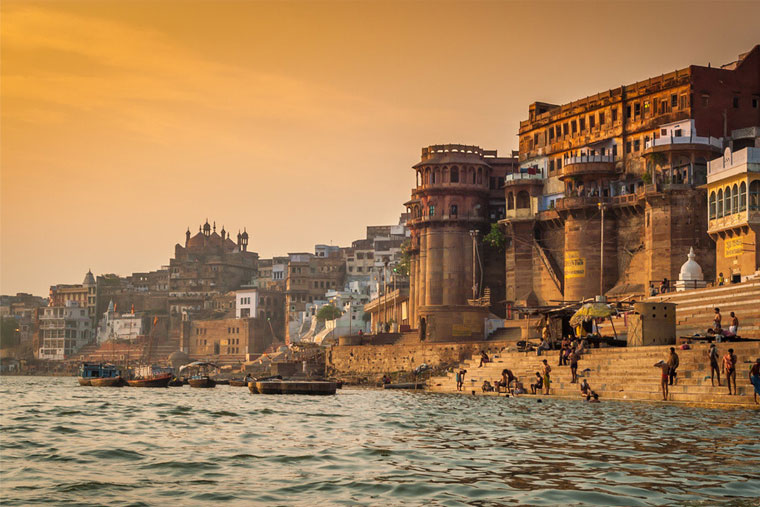Varanasi’s liveliest and most colourful ghat is Dashashwamedh Ghat , easily reached at the end of the main road from Godaulia Crossing . The name indicates that Brahma sacrificed (medh) 10 (das) horses (aswa) here. In spite of the oppressive boat owners, flower sellers and touts trying to drag you off to a silk shop, it’s a wonderful place to linger and people-watch while soaking up the atmosphere. Every evening at 7pm an elaborate ganga aarti ceremony with puja , fire and dance is staged here.
Just south of here is Someswar Ghat (Lord of the Moon Ghat), said to be able to heal diseases. The Munshi Ghat is very photogenic, while Ahalya Bai’s Ghat is named after the female Maratha ruler of Indore
Just north of Dashashwamedh Ghat, Raja Man Singh’s Man Mandir Ghat was built in 1600, but was poorly restored in the 19th century. The northern corner of the ghat has a fine stone balcony
Manikarnika Ghat , the main burning ghat, is the most auspicious place for a Hindu to be cremated. Dead bodies are handled by outcasts known as doms , and are carried through the alleyways of the old city to the holy Ganges on a bamboo stretcher swathed in cloth. The corpse is doused in the Ganges prior to cremation. Huge piles of firewood are stacked along the top of the ghat; every log is carefully weighed on giant scales so that the price of cremation can be calculated. Each type of wood has its own price, sandalwood being the most expensive. There is an art to using just enough wood to completely incinerate a corpse. You can watch cremations but always show reverence by behaving respectfully. Photography is strictly prohibited
You’re almost guaranteed to be led by a priest, or more likely a guide, to the upper floor of a nearby building from where you can watch cremations taking place, and then asked for a donation (in dollars) towards the cost of wood. If you don’t want to make a donation, don’t follow them
Above the steps here is a tank known as the Manikarnika Well. Parvati is said to have dropped her earring here and Shiva dug the tank to recover it, filling the depression with his sweat. The Charanpaduka, a slab of stone between the well and the ghat, bears footprints made by Vishnu. Privileged VIPs are cremated at the Charanpaduka, which also has a temple dedicated to Ganesh
Dattatreya Ghat bears the footprint of the Brahmin saint of that name in a small temple nearby. Scindhia Ghat was originally built in 1830, but was so huge and magnificent that it collapsed into the river and had to be rebuilt.


